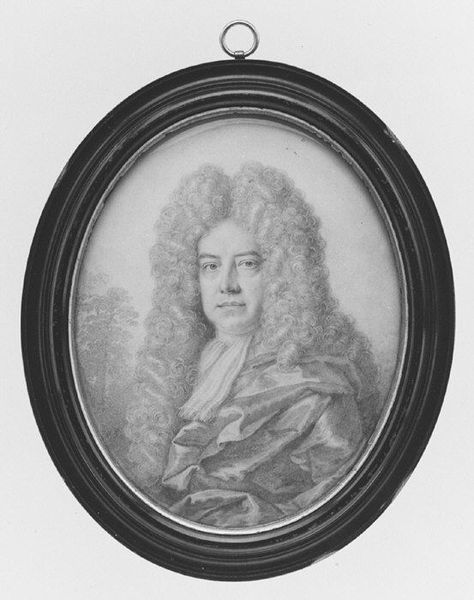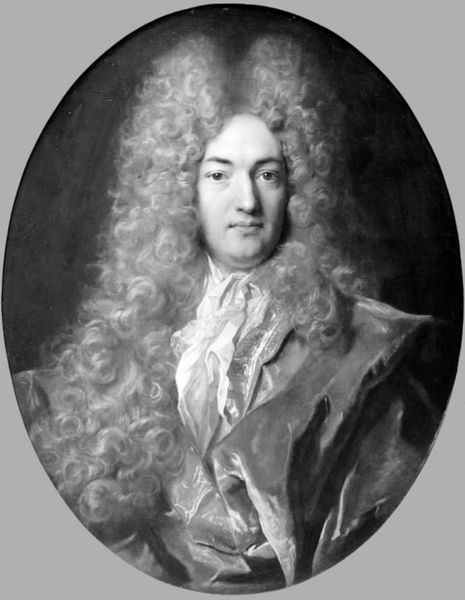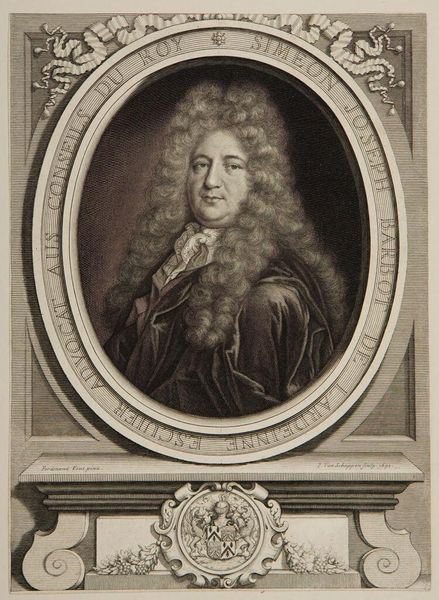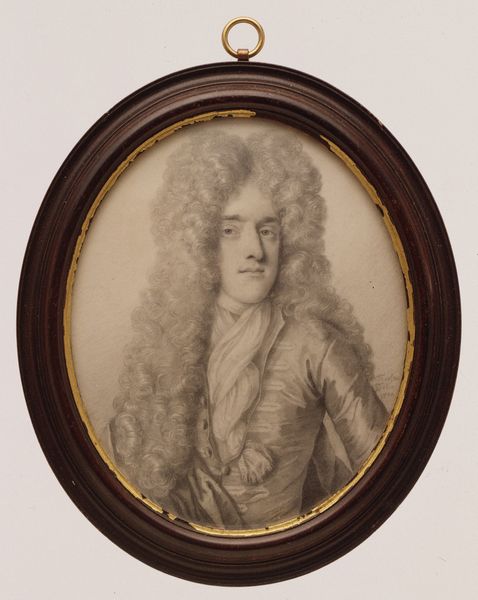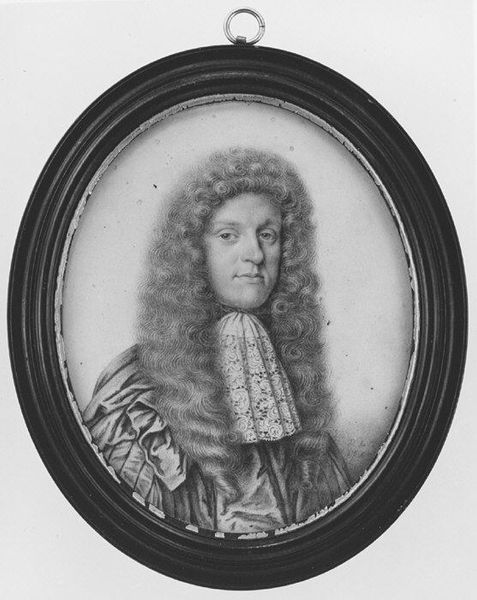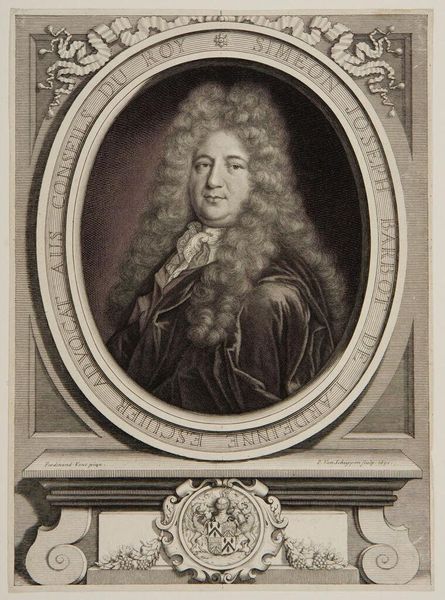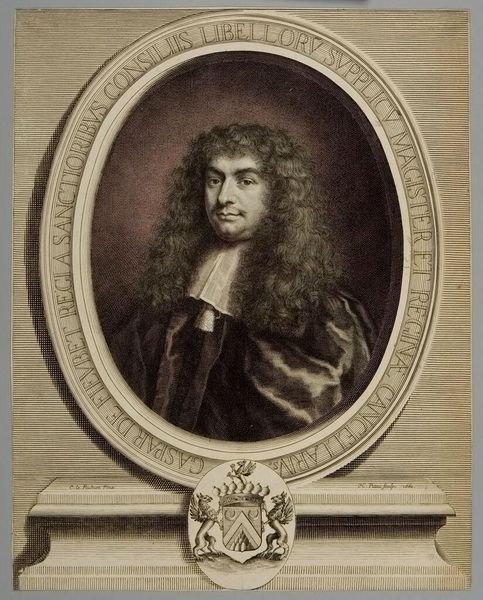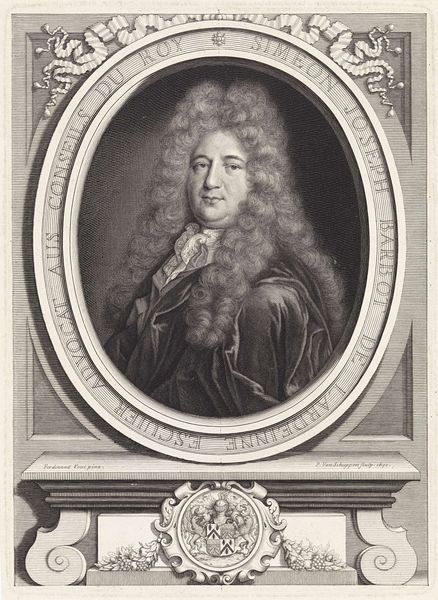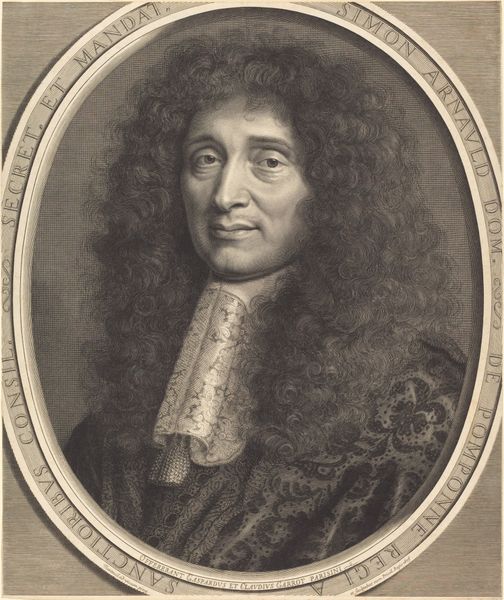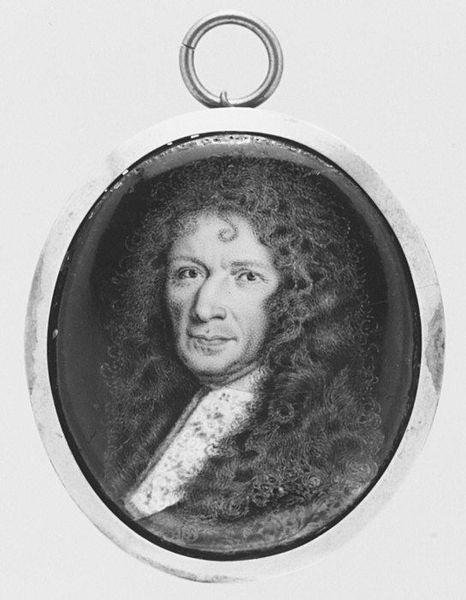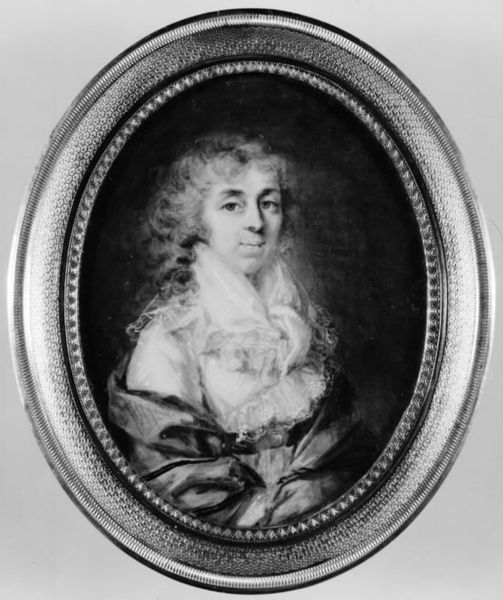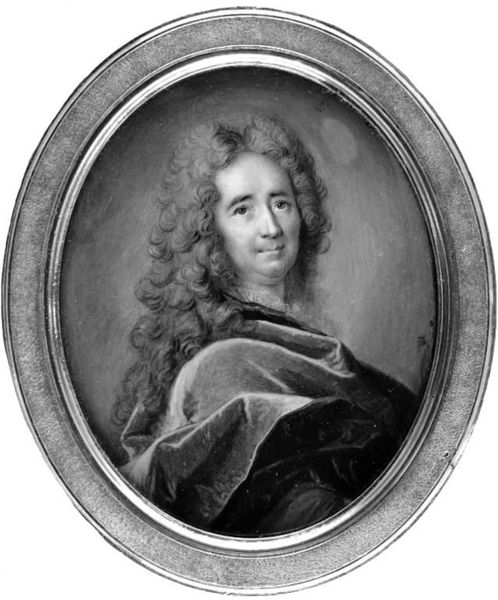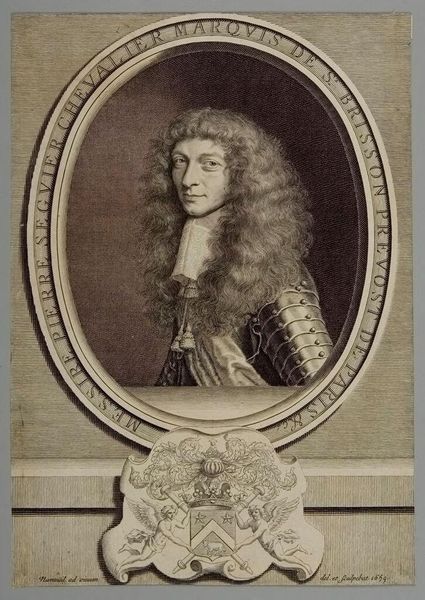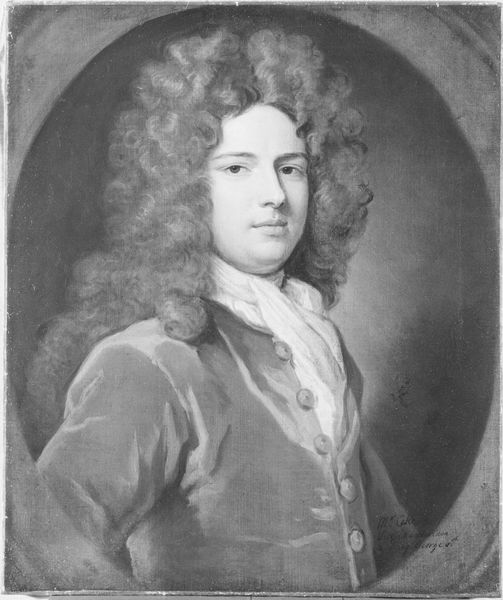
drawing
#
portrait
#
drawing
#
baroque
#
black and white
Dimensions: Oval, 4 1/4 x 3 3/8 in. (106 x 85 mm)
Copyright: Public Domain
Curator: The most striking thing to me is how soft it feels, despite being a monochrome drawing. It's delicate, almost like a whisper from the past. Editor: Indeed. What you are seeing is Robert White’s “Portrait of a Man,” created around 1690. You can currently find it in the collection of the Metropolitan Museum of Art. It gives us some insight into the fashion of the period, of course, but beyond that, how portraits circulated amongst elite society. Curator: It makes me wonder who this man was. Those flowing curls—I bet he turned heads. There's a real air of confidence, or is it a bit of practiced nonchalance? Almost daring us to look closer, like a character from a Restoration comedy. Editor: Think of it as carefully constructed public image, the 17th-century version of curating your social media profile. These portraits functioned as calling cards, circulated among the aristocracy, solidifying status through the display of wealth and elegance. It wasn't just about likeness; it was about performing power. Curator: So, in essence, each curl, each fold of fabric is not merely decorative. But an intentional signal meant to be read and decoded? I find it funny imagining our man worrying if his wig was voluminous enough! It really brings into question authenticity versus presentation, doesn't it? Something that is very relatable today. Editor: Precisely! White and other portraitists tapped into a burgeoning market, driven by a desire for social visibility. Prints were more easily reproduced and disseminated, democratizing art. Curator: Thinking about the drawing itself, it’s such a masterful play with light and shadow, isn't it? Look at how the textures just seem to dance on the page. I wonder if White thought much about how he was helping shape our understanding of status and presentation even centuries later? Editor: His choices certainly offer insight into that period, showing us just how images play a key role in the power dynamics within society, how it functions, and how it lasts through the centuries. Curator: Thinking of this now, the delicate strokes somehow capture both fragility and a resolute desire for permanence. Editor: It is truly remarkable that art can trigger new thought through many eras and be able to show us these powerful reflections across such a vast period.
Comments
No comments
Be the first to comment and join the conversation on the ultimate creative platform.
